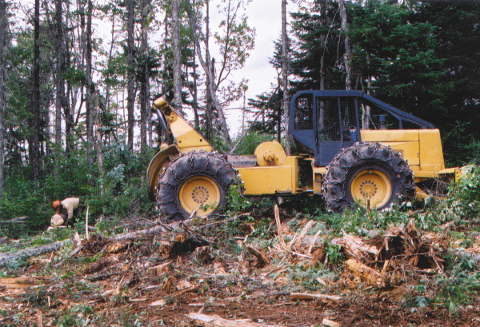

| Topic: Skidder Accidents Injure and Kill Woods Workers | |
| Date Issued: March 30, 2022 | Date Revised: |
In recent years, three woodworkers died and several were seriously injured while assisting a skidder operator on a conventional logging operation. In each instance, the skidder operator had started to winch the load while a co-worker was still in the area.
During a winching operation, trees are pulled toward the skidder and can become snagged or pulled up against another tree, a stump or part of the skidder. Tension builds on the winching cables and the logs can either swing out to the side, or over the skidder, striking anyone in the area with a very strong force.
These incidents can be prevented by following some simple precautions.

Revised March 2022.